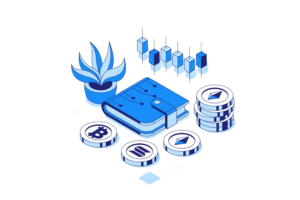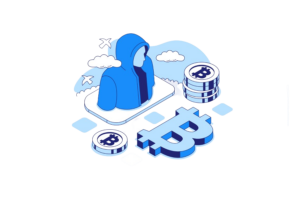Uniswap is a cryptocurrency exchange that uses the Ethereum blockchain and allows users to make exchanges without a centralized third party.
It is the biggest of the decentalized exchange (DEX) platforms by trading volume as well as one of the top five most popular exchanges.
Uniswap is a key part of the decentralized finance ecosystem, also known as DeFi. A lot of cryptocurrency trading takes place on centralized exchanges that are governed by a single authority. DeFi uses non-custodial, decentralized products to replace middlemen in applications like loans, insurance and derivatives.
Liquidity can be a challenge for centralized exchanges, which can result in traders not being able to fill orders. Uniswap addresses this by using a type of trading called “automated liquidity protocol.” This allows the exchange to trade tokens without relying on buyers or sellers to create liquidity.
Uniswap is also a cryptocurrency that uses the symbol UNI, which has risen to become the 10th largest cryptocurrency according to market capitalization. UNI reached a peak price of more than $44, in part due to the rising popularity of yield farms, which often require users to own UNI or Uniswap LP.
How does Uniswap work?
Uniswap incentivizes people trading on the exchange to become liquidity providers (LP).
That means users pool their money together to create a fund that is used to execute all trades taking place on the platform.
Each token listed has its own pool that users can contribute to. Prices for each token are worked out using an algorithm run by a computer.
Under this system, a buyer or seller does not have to wait for an opposite party to appear to complete a trade. Instead, they can execute any trade instantly at a known price provided that there is enough liquidity in the pool to facilitate it.
Uniswap differs from other DEX platforms by using Constant Product Market Maker Model (CPMMM) as an evaluating method. This is a variant of the AMM or Automated Market Maker prototype.
Uniswap is not based on advanced trade engineering and does not require an order book.
A user who lends the analogous worth of two tokens to the pool is eligible to be a liquidity provider. Merchants pay tax to the pool, which is then disseminated to liquidity providers depending on their share of the pool.
These tokens can be either two ERC-20, or one ERC-20 and one ERC-20. These pools usually contain stablecoins like USDC or DAI, but this is not a rule. Based on their contribution to a pool, LPs may reclaim these liquidity tokens.

What makes Uniswap unique?
Uniswap differs from other decentralized exchanges because it uses a pricing model called the “Constant Product Market Maker Model”.
Any token can also be added to Uniswap if it is funded with an equivalent amount of ETH and the ERC20 trade token.
Let’s look at an example. To make an exchange for an altcoin called Durian Token, you would launch a new Uniswap smart contract for Durian Token and create a liquidity pool with – for example – $10 worth of Durian Token and $10 worth of ETH.
Uniswap’s difference is that, instead of connecting sellers and buyers to determine the Durian Token price, Uniswap uses a constant formula: x * y= k.
In the equation, “x” is the amount of ETH or ERC20 tokens available in a liquidity fund and “y” is the constant value. This equation calculates the price of a token by balancing the ETH, ERC20 tokens and supply and demand. Durian Token is priced higher when it’s bought with ETH. As ETH supply increases, Durian Token supply decreases.
The price of tokens in Uniswap cannot change unless trades take place. Uniswap’s main function is balancing the value of tokens and swapping them based on how much they are being bought and sold for.
What are the advantages of Uniswap?
- You don’t have to log in or reveal your identity. There is no central authority that can block clients or hold onto their assets
- Uniswap’s code is open-source, which means anyone can use it for decentralized trades
- A wallet address is all you need, whether you’re a merchant, LP or member. This wallet address can also be used as a universal Metamask
- It’s very easy to link a wallet and Uniswap. Uniswap gives you full guardianship over all your assets
- Uniswap can be extremely useful to startups that want to quickly release their tokens on the market and expand their customer base
What are the advantages of Uniswap?
- Major congestion on Ethereum has caused transaction costs to jump significantly, making trading on Uniswap expensive – especially for low-value traders
- Uniswap doesn’t allow users to buy cryptocurrency using fiat money, such as the U.S. dollar.
- Liquidity mining makes Uniswap exciting, because you can grow your holdings. But it also carries the risk that you could lose money if the value of your crypto changes
Are there different versions of Uniswap?
Uniswap was founded in November 2018, but the protocol only gained significant traction recently with the introduction of new versions.
Uniswap V2 was released in May 2020 with major upgrades that allow for direct ERC20-to-EC20 swaps. V2 also supports incompatible ERC20 tokens, such as OmiseGo and Tether and has many technical enhancements that make it easier to use.
Uniswap V2 saw meteoric growth in a short time. There was a surge of interest in 2020 as liquidity mining and yield farming platforms increased in popularity. DeFi platforms enable Uniswap liquidity providers to make additional returns on their LP tokens.
This, combined with the 0.3 per cent exchange fee distributed to liquidity providers – and the Uniswap’s popularity as a platform for DeFi projects tokens – has propelled it to become one of the leading DeFi platforms according to total value locked, a measure the total value of crypto assets held in the platform.
Uniswap launched V3 in May 2021. This latest version adds new features such as concentrated liquid, which allows liquidity providers to allocate liquidity within a specific price range. This means traders don’t have to place as much capital to achieve their goals.
What’s next for Uniswap?
Uniswap’s reputation as one the top DEXs has given it considerable power. As the DeFi industry grows, many are keen to capitalize on that and regulators will begin to scrutinize the space more closely. The Securities and Exchange Commission and Commodity Futures Trading Commission are already looking at DeFi regulation.
Members of the Uniswap community launched a governance plan to create a “political defence” fund with a budget of 1 to 1.5 million UNI in an effort to preempt regulatory and tax threats. This could allow the emerging DeFi space to counter “massive spending by traditional finance players.”
Conclusion
Uniswap is a decentralized cryptocurrency exchange that uses the Ethereum blockchain and allows users to trade without involvement from a centralized third party.
Uniswap is also a cryptocurrency with the symbol UNI.
Uniswap has seen major growth since 2020 rising to become the biggest DEX platform by trading volume – however there could be challenges ahead as the DeFi space draws attention from regulators.








